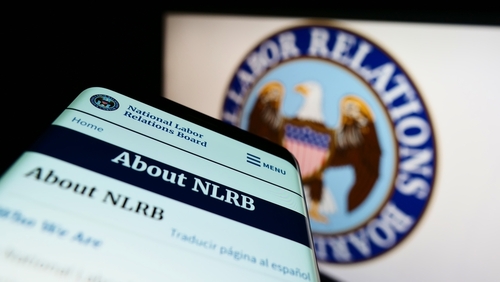There Go the Jobs: Positions Behind the Bench Are Expected to Drop

Photo of Peter Bennett by Dennis Welsh
Dreaming of leaving the manic, day-to-day practice of law behind and waltzing into the less stressful, more secure niche of the judiciary?
Your odds of making that transition are diminishing (and perhaps because of that, your assumptions are likely flawed). Judgeships are disappearing at a higher rate than jobs in other employment categories.
On the surface, employment projections for the judiciary don’t raise eyebrows. The employment category encompassing judges, magistrates and other judicial workers is expected to grow 4 percent by 2018, according to the U.S. Bureau of Labor Statistics. However, that expansion will be slower than the average for all occupations.
In addition, the anemic growth comes only because the BLS projects an 8 percent increase in administrative law judges, adjudicators and hearing officers, and a 14 percent jump in arbitrators, mediators and conciliators.
The purely judicial subgroup that covers judges, magistrate judges and magistrates? That’s expected to contract 3 percent.
NO ORDINARY RECESSION
The economy is partly to blame. “Every time a recession comes around, you see the courts coming under particular pressure,” says Seth Andersen, executive director of the American Judicature Society in Des Moines, Iowa. “During 2000-01, a relatively mild recession, a number of state courts took pretty significant budget cuts. But this recession is the most egregious. Usually judgeships are among the last to go.”
And they haven’t been the only thing to go: In 37 states, courts have stalled when filling vacancies in judicial support positions; 42 have implemented salary freezes for court staff; and 13 have cut court employees’ salaries, according to the National Center for State Courts in Williams burg, Va. And 21 states have furloughed clerical or administrative staff.
Though Chief Justice John G. Roberts Jr. gave Congress a nod for “its careful consideration of the judiciary’s financial needs” and said the courts “continue to operate soundly” in his 2011 year-end report on the federal judiciary, the federal system may follow the states.
“There are some projections that the federal judiciary, when a budget deal is struck, could see some double-digit reductions in its head count and staffing,” says Peter Bennett, principal at the Bennett Law Firm with offices in Portland, Maine, and Boston. He is chair of the ABA Standing Committee on Judicial Independence.
State cutbacks aren’t occurring solely because of the recession. “State judiciaries have been traditionally, consistently in many instances, simply underfunded,” says William E. Raftery, an analyst at the NCSC. “It’s part of a larger systemic problem that’s been occurring for decades.”
Raftery points to a 1973 resolution adopted by the Conference of Chief Justices asserting that a justice system dependent on state legislatures for funding can’t hope to achieve its goals, including equal justice for all. The resolution called for state supreme courts—not legislators—to oversee state court systems with funding from a constitutionally guaranteed percentage of the state’s general revenue funds.
No state has implemented such a system.
Instead, Michigan’s State Court Administrative Office itself recommended eliminating 45 trial court judgeships and four of 28 appellate positions because “the current number of judgeships is not justified by the courts’ workload.” However, the office’s report (PDF), released in August, also said 31 new trial court posts would be needed, but it didn’t recommend creating them in this economic climate.
There’s even speculation about a sinister cause for the shrinking judiciary. “There is, at least in some quarters,” Bennett reports, “the perception that it’s being done to influence judicial decision-making or punish judges for decisions that someone may disagree with.”
The effects of the courts’ contractions are “profound,” Bennett contends. “Maine has instituted some very hefty fees for filing various pleadings.”
ABA President Wm. T. (Bill) Robinson III has focused on state court funding problems throughout his presidency, and the ABA has established its Law Day theme as “no courts, no justice, no freedom,” Robinson says. The goal is to spur rallies and press conferences on the steps of every state capitol on Law Day to speak out on the need for court funding.
Write a letter to the editor, share a story tip or update, or report an error.


